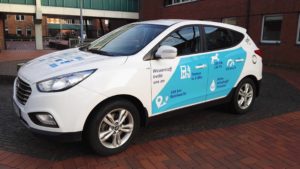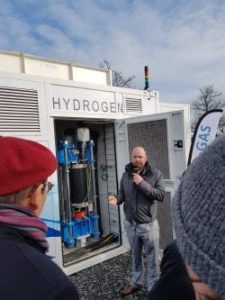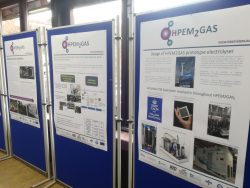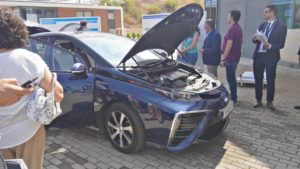Electric Cars vs. Hydrogen Cars: Decoding the Future of Automotive Technology

Introduction:
The automotive industry has been undergoing a remarkable transformation in recent years, with a significant shift towards cleaner and more sustainable modes of transportation. Electric cars and hydrogen cars have emerged as leading contenders in this transformative race. Both these technologies offer promising alternatives to traditional internal combustion engines, but what sets them apart? In this article, we delve into the fundamental differences between electric cars and hydrogen cars, exploring their respective technologies, infrastructure requirements, environmental impact, and future prospects.
I. Electric Cars: Powering the Road with Electrons
Electric Vehicle (EV) Basics:
Electric cars, also known as electric vehicles (EVs), rely on electricity as their primary source of power. They are propelled by one or more electric motors, drawing energy from rechargeable batteries. The batteries store electrical energy that is used to power the motor, resulting in zero tailpipe emissions.
Advantages of Electric Cars:
Environmental Friendliness: Electric cars produce zero direct emissions, reducing air pollution and greenhouse gas emissions, thereby combating climate change.
Energy Efficiency: Electric motors are more efficient compared to internal combustion engines, converting a higher percentage of energy from the grid into usable power, resulting in improved energy efficiency.
Lower Operating Costs: Electric cars have lower operating costs due to reduced fuel consumption and fewer maintenance requirements.
Challenges and Limitations:
Limited Driving Range: The driving range of electric cars is typically limited by the capacity of their batteries, although advancements in battery technology are continuously increasing range capabilities.
Charging Infrastructure: Widespread adoption of electric cars requires the development of an extensive charging infrastructure, including public charging stations and home charging solutions.
Battery Recycling: Proper disposal and recycling of electric vehicle batteries present challenges due to their chemical composition and potential environmental impacts.
II. Hydrogen Cars: Unleashing the Power of Hydrogen
Hydrogen Vehicle Basics:
Hydrogen cars, also known as fuel cell electric vehicles (FCEVs), utilize hydrogen gas as a fuel source. Instead of relying on batteries, they employ a fuel cell stack to convert hydrogen and oxygen into electricity, which powers the vehicle’s electric motor. The only byproduct of this process is water vapor.
Advantages of Hydrogen Cars:
Fast Refueling: Hydrogen refueling is comparable to the time it takes to refuel a conventional gasoline vehicle, offering a familiar and convenient experience for drivers.
Extended Range: Hydrogen cars typically have a longer range than electric cars, making them suitable for long-distance travel without the need for frequent refueling.
Versatility: Hydrogen can be produced from a variety of sources, including renewable energy, making it a versatile and potentially sustainable fuel option.
Challenges and Limitations:
Limited Infrastructure: Hydrogen refueling infrastructure is currently less developed compared to electric charging infrastructure, limiting the widespread adoption of hydrogen cars.
Cost and Efficiency: Hydrogen production, storage, and distribution require substantial energy, and the overall efficiency of converting hydrogen to electricity is lower compared to direct electric propulsion.
Safety Concerns: Hydrogen is highly flammable and requires careful handling and storage considerations, posing challenges in terms of safety regulations and public perception.
III. Electric Cars vs. Hydrogen Cars: A Comparative Analysis
Energy Source: Electric cars rely on electricity from the grid, which can be generated from various sources, including fossil fuels and renewable energy. Hydrogen cars depend on hydrogen gas, which can be produced through various methods, including electrolysis of water.
Environmental Impact: Electric cars have zero tailpipe emissions, but the overall environmental impact depends on the source of electricity. Hydrogen cars emit only water vapor, making them environmentally friendly. However, the production and distribution of hydrogen can involve carbon emissions if not derived from renewable sources.
Infrastructure: Electric cars benefit from a more established charging infrastructure, while hydrogen cars require the development of a more extensive refueling network.
Technology Maturity: Electric cars are more commercially mature, with a wider range of models available. Hydrogen cars are still in the early stages of commercialization, with limited model availability and higher costs.
Consumer Adoption: Electric cars have gained significant consumer traction, with growing sales and market share. Hydrogen cars, while promising, are currently less common and face challenges in achieving mass adoption.
Conclusion:
Electric cars and hydrogen cars represent two distinct paths towards sustainable and cleaner transportation. Electric cars have made significant strides in recent years, benefiting from a more established infrastructure and wider consumer adoption. Hydrogen cars offer certain advantages, such as fast refueling and extended range, but face challenges related to infrastructure development and cost efficiency. As technology continues to evolve, both these alternatives hold promise for a greener future, contributing to reduced carbon emissions and improved air quality on our roads. The ultimate success lies in further advancements, widespread adoption, and a collective commitment to a sustainable automotive landscape.

























